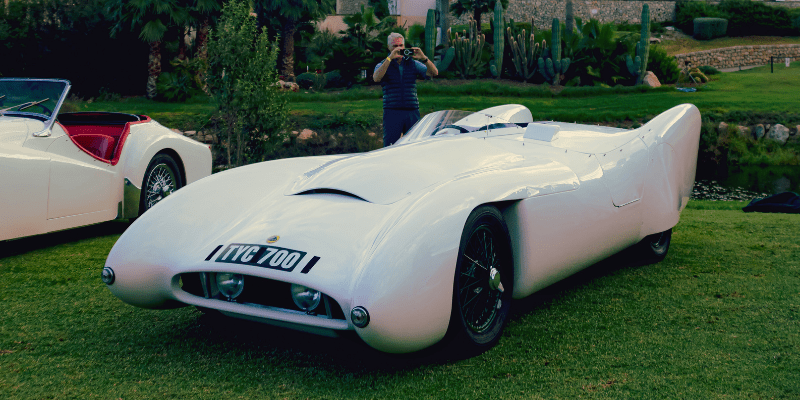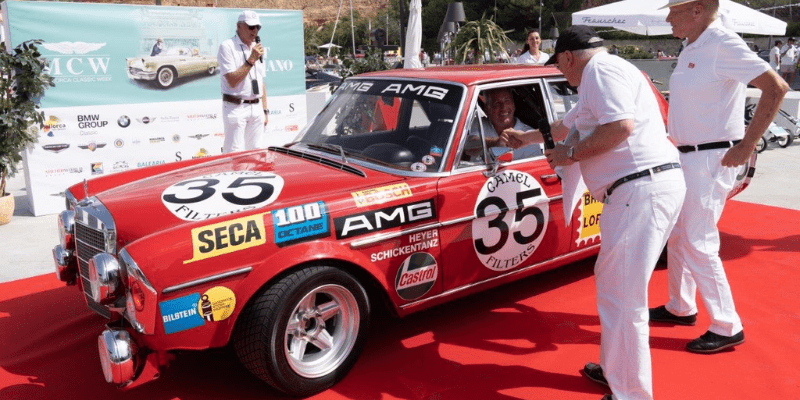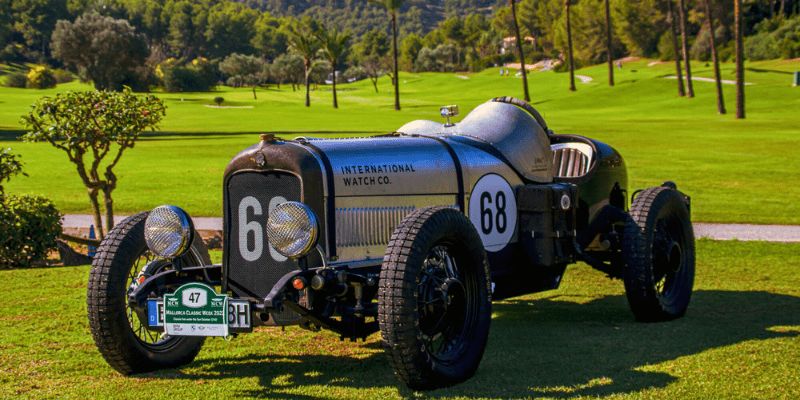When does a car become a classic?
A car typically becomes a classic when it meets the following criteria:
- Age: Most experts consider a car to be a classic when it reaches 25-30 years old, with some using 40 years as the benchmark.[1][2] In the UK, a common definition is 40 years old for tax exemption purposes.[3]
- Design and Engineering: Classic cars often represent unique or innovative design and engineering features that set them apart from other vehicles of their era.[1] Their styling, technology, or cultural impact make them iconic representations of a particular time period.
- Rarity and Exclusivity: Limited production numbers, special editions, or few surviving models can contribute to a car’s classic status due to its rarity and exclusivity.[1]
- Condition and Authenticity: Well-preserved cars maintaining their originality in parts, appearance, and specifications are prime candidates for classic status.[1] Authentic restorations that maintain the vehicle’s integrity are also important factors.
- Cultural Significance: Cars that capture the essence of their era, are tied to historical events, popular culture, or famous personalities often gain classic status due to their cultural impact.[1][2]
- Investment Potential: Unlike most modern cars that depreciate, classic cars can appreciate in value over time, making them desirable investments.[1]
However, the definition of a “classic car” can vary among enthusiasts, clubs, and insurance providers. Some companies may consider cars as young as 5-15 years old to be classics if they meet certain criteria like limited production or ability to hold value.[3] Ultimately, a car’s transition to classic status involves a combination of age, design, cultural significance, rarity, condition, and subjective appreciation by enthusiasts.[1][2]
Citations:
[1] https://www.forzafinance.co.uk/news/when-does-a-car-become-a-classic
[2] https://www.rac.co.uk/drive/features/when-does-a-car-become-a-classic-10-newly-classic-cars/
[3] https://www.adrianflux.co.uk/blog/2023/02/when-car-become-classic/
[4] https://www.nationwide.com/lc/resources/auto-insurance/articles/how-old-is-a-classic-car
[5] https://www.sheengroup.com.au/resources/when-is-a-car-considered-to-be-a-classic
What are some examples of cars that became classics despite not being 40 years old
While the general consensus is that a car becomes a classic when it reaches 40 years of age, there are some notable exceptions where certain cars have achieved classic status despite being younger. Here are a few examples:
- Ford Sierra RS Cosworth (1986-1992): This high-performance version of the Ford Sierra became an instant classic due to its rarity, motorsport pedigree, and iconic “whale-tail” rear spoiler design. A 1987 model sold for a staggering £596,250 at auction in 2023, cementing its classic status.[1][2]
- Mazda RX-7 (1978-2002): The RX-7’s unique rotary engine, sleek styling, and impressive performance made it a cult classic, especially the third-generation models from the early 1990s.[2]
- Volkswagen Golf GTI Mk1 (1976-1983): The original hot hatch that started the trend, the Mk1 GTI is considered a classic due to its historical significance, fun driving dynamics, and iconic boxy design.[1]
- BMW E30 M3 (1986-1991): The first M3 from BMW is highly coveted by enthusiasts for its pure driving experience, motorsport heritage, and timeless good looks, making it a modern classic.[4]
- Fiat Panda (1980-2003): While not a performance car, the original Panda’s simplicity, quirky design, and cult following have earned it classic status, especially in its home market of Italy.[1][3]
- Lancia Delta Integrale (1986-1994): This rally-bred hot hatch with its distinctive boxy shape and turbocharged engine is considered a modern classic due to its rarity, motorsport success, and cult following.[4]
These examples demonstrate that while age is a significant factor, a car’s design, engineering, cultural impact, rarity, and enthusiast following can also contribute to it achieving classic status before reaching the traditional 40-year benchmark.[1][2][4]
Citations:
[1] https://www.keithmichaels.co.uk/news/age-when-cars-become-classic/
[2] https://www.rac.co.uk/drive/features/when-does-a-car-become-a-classic-10-newly-classic-cars/
[3] https://www.thisismoney.co.uk/money/cars/article-8222011/The-Metro-Panda-Astra-40-year-old-classics.html
[4] https://www.forzafinance.co.uk/news/when-does-a-car-become-a-classic
[5] https://www.matfoundrygroup.com/blog/The_Future_of_Classic_Cars
What role does rarity play in determining a car as a classic
Rarity plays a significant role in determining if a car is considered a classic. Here are some key points about how rarity contributes to classic car status:
- Limited Production Numbers: Cars that were produced in very small quantities or had limited production runs are more likely to be considered classics due to their scarcity.[1][2] Exclusivity and low supply increase desirability among collectors and enthusiasts.
- Special Editions: Limited or special edition models with unique features or styling cues not found on regular production vehicles are prized for their rarity and can achieve classic status more easily.[1]
- Surviving Examples: Even for mass-produced models, if very few examples have survived over the decades due to age, accidents, or being scrapped, the remaining cars become rare and more valuable as classics.[2][3]
- Discontinued Models: When an automaker discontinues a particular model line, the remaining cars from that line become rarer over time, potentially elevating them to classic status, especially if they were iconic or significant models.[1][3]
- Cultural Significance: Cars that were tied to important events, movies, celebrities or had a major cultural impact can be considered classics due to their rarity in representing that specific era or moment in time.[1][3]
So in essence, rarity created by limited production, special editions, few surviving numbers, discontinued models, or cultural uniqueness contributes significantly to a car’s potential for achieving classic status among collectors, enthusiasts, and the automotive community.[1][2][3] The rarer and more exclusive a vehicle is, the more likely it is to be revered as a classic automobile.
Citations:
[1] https://www.forzafinance.co.uk/news/when-does-a-car-become-a-classic
[2] https://www.keithmichaels.co.uk/news/age-when-cars-become-classic/
[3] https://www.rac.co.uk/drive/features/when-does-a-car-become-a-classic-10-newly-classic-cars/
[4] https://www.adrianflux.co.uk/blog/2023/02/when-car-become-classic/
[5] https://www.sheengroup.com.au/resources/when-is-a-car-considered-to-be-a-classic
What are some of the rarest classic cars currently on the market
Some of the rarest classic cars currently on the market include:
- Mercedes-Benz 300 SLR Uhlenhaut Coupé: With only two examples ever produced in 1955, this is considered one of the rarest cars in the world. One sold for a record $142 million in 2022, making it the most expensive car ever sold.[1][2]
- Ferrari 250 GT California SWB Spider: Only 56 of these were made between 1960-1962. A 1962 model sold for $17.16 million in 2021, highlighting their immense rarity and value.[3]
- Bugatti Type 41 Royale: Bugatti only produced 6 examples of this massive luxury car between 1926-1933. With just 3 remaining, they are among the rarest and most valuable classics.[1][4]
- Talbot-Lago Grand Sport: Only 12 examples of the luxury version were ever made after its introduction in 1948, making it an ultra-rare classic.[1]
- Porsche 916: This prototype model from 1972 had a production run of just 11 cars, cementing its status as one of Porsche’s rarest models.[1][2]
- Aston Martin DB4GT Zagato: Just 19 examples of this lightweight racing variant were produced between 1960-1962, contributing to its rarity and multi-million dollar values today.[2]
- Ferrari 250 GTO: With only 39 made from 1962-1964, the 250 GTO is one of the most iconic and coveted classic Ferraris, routinely selling for over $30 million.[2][4]
These ultra-limited production numbers, along with their historical significance, performance pedigree, and appreciation as collector’s items, make these some of the rarest and most valuable classic cars currently available on the market.[1][2][3][4]
Citations:
[1] https://www.catawiki.com/en/stories/4943-top-5-rarest-classic-cars-in-the-world
[2] https://www.neighbor.com/storage-blog/rare-classic-cars/
[3] https://consent.yahoo.com/v2/collectConsent
[4] https://www.motorious.com/articles/features-3/rarest-and-most-expensive-cars-ever/
[5] https://www.youtube.com/watch?v=GvgfNrHKWeE






